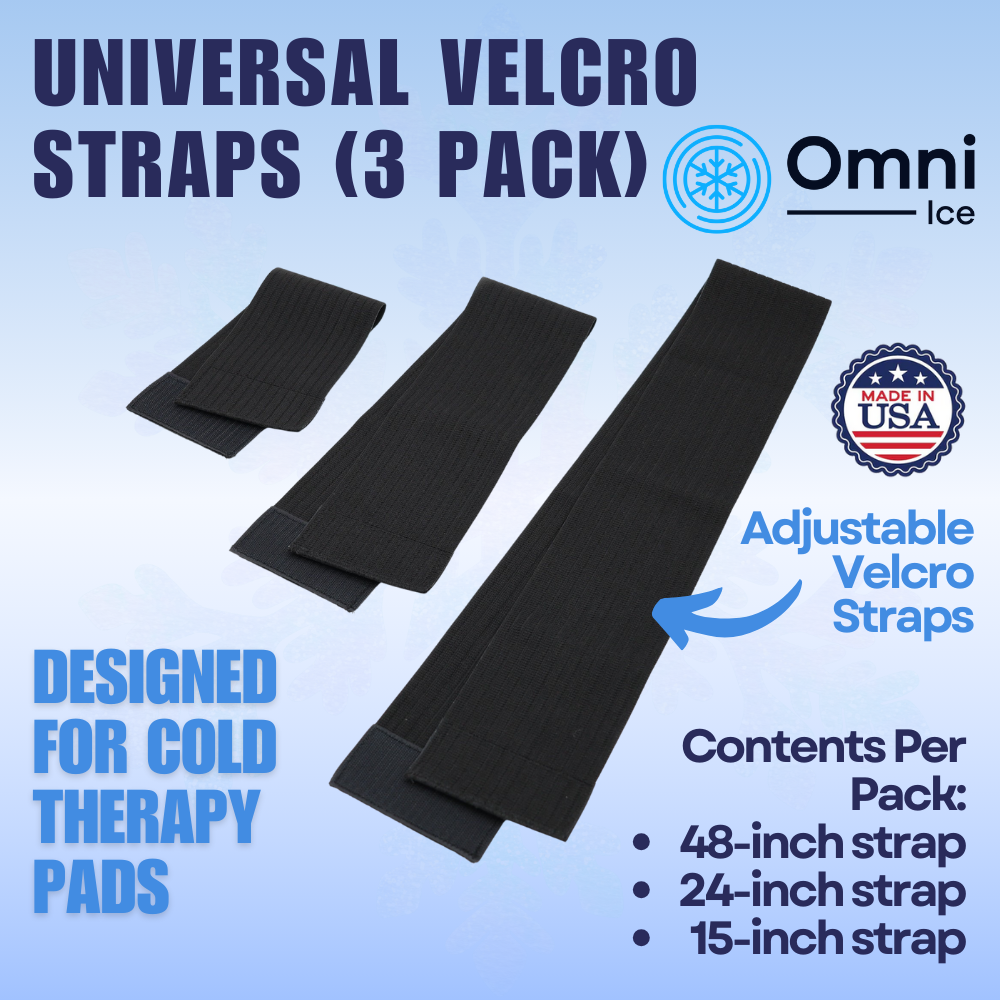Gel Packs vs. Cryotherapy Units Post-TKA: A PT's Comparative Breakdown
Effective management of pain and edema post-total knee arthroplasty (TKA) significantly influences patient outcomes and functional recovery timelines. Cryotherapy is a go-to modality in the PT toolkit, with gel packs and cryotherapy units (cold therapy machines) being predominant options. Let's dissect the clinical advantages, limitations, and optimal use strategies for these modalities, facilitating informed clinical decisions tailored to your patient's rehabilitation trajectory.
Modalities Explained
Gel Packs: Definition: Reusable, gel-filled cold packs. Mechanism: Stored in a freezer and applied directly to the affected joint for superficial cooling to reduce local inflammation and provide analgesia. Types: Available in multiple anatomical shapes with securing options like Velcro straps for stable positioning.
Cryotherapy Units: Definition: Devices circulating cooled water through anatomically contoured pads. Mechanism: Pump-driven continuous cold-water circulation maintains consistent therapeutic temperatures, often combined with mechanical compression. Features: Adjustable temperature controls, integrated compression, and programmable duration timers.
Gel Packs: Clinical Advantages and Limitations Pros:
-
Cost Efficiency: Highly economical, making them feasible for widespread clinical use and patient home programs.
-
User-Friendly: Straightforward freezer-to-patient application, ideal for quick interventions within treatment sessions.
-
Anatomical Adaptability: Conform well around irregular joint surfaces, allowing targeted edema management.
-
Portable Modality: Excellent for patients needing on-the-go cryotherapy between clinic visits or during travel.
Cons:
-
Short Duration of Effectiveness: Typically maintains therapeutic cooling for only 20-30 minutes, limiting sustained edema management.
-
No Integrated Compression: Misses synergistic benefits provided by combined cold and compression therapy.
-
Condensation Issues: Potential for moisture accumulation as the gel pack warms, causing patient discomfort or skin maceration if inadequately managed.
Cryotherapy Units: Clinical Advantages and Limitations Pros:
-
Sustained Therapeutic Cooling: Consistent temperature delivery for prolonged therapeutic interventions, optimizing early-stage post-surgical edema reduction.
-
Precise Temperature Regulation: Offers clinicians precise thermal modulation tailored to patient tolerance and recovery stage, minimizing risk of thermal injury.
-
Integrated Compression: Enhances edema reduction, supporting lymphatic and venous return—a critical factor in early rehabilitation phases.
-
Uniform Coverage: Anatomically designed wraps provide homogeneous cooling, addressing comprehensive joint inflammation.
Cons:
-
Higher Cost Investment: Represents a larger financial commitment, requiring budget considerations for clinics or patient purchase.
-
Limited Portability: Reliance on electrical power limits patient mobility and flexibility in home or outpatient settings.
-
Maintenance Requirements: Necessitates regular cleaning and setup, posing additional logistical considerations for both clinical staff and patients.
Integrative Clinical Strategy: Utilizing Both Modalities An evidence-based, phased approach maximizes therapeutic outcomes:
Acute Phase (Weeks 1-3 Post-TKA):
-
Cryotherapy Units: Primary modality postoperatively and after intensive PT sessions, ensuring maximal inflammation and edema control.
-
Gel Packs: Supplementary role for spot treatment or short-duration relief between sessions or during limited patient mobility scenarios (e.g., car trips).
Subacute Phase (Weeks 3-8 Post-TKA):
-
Cryotherapy Units: Recommended after PT sessions or increased activity levels to proactively manage residual or exercise-induced edema.
-
Gel Packs: Home-based option to maintain therapeutic effect conveniently throughout daily activities.
Maintenance Phase (Long-term recovery):
-
Gel Packs: Ideal for addressing intermittent pain flare-ups or localized swelling, enhancing patient autonomy in ongoing management.
-
Cryotherapy Units: Reserved for significant inflammatory episodes, such as increased activity demands or postoperative complications.
Clinical Rationale for Combined Usage:
-
Personalization of Treatment: Allows patient-specific modality choices, enhancing adherence and therapeutic efficacy.
-
Targeted Therapy: Cryotherapy units provide broad joint coverage, while gel packs address localized edema or tenderness precisely.
Clinical Decision-Making: Selecting the Optimal Cryotherapy Approach Considerations for modality selection:
-
Surgeon Protocols: Align modality usage with surgeon-specific postoperative guidelines.
-
Edema and Pain Severity: Higher severity cases benefit significantly from cryotherapy units, leveraging continuous cold and compression.
-
Patient Lifestyle: Evaluate patient activity demands, mobility requirements, and practicality for home-use implementation.
-
Budget Constraints: Balance cost-effectiveness with therapeutic needs and anticipated usage duration.
-
Patient Preference: Patient comfort and acceptance significantly influence compliance and, ultimately, rehabilitation success.
Final Recommendations: Incorporate clinical judgment, patient feedback, and interdisciplinary guidelines when prescribing cryotherapy interventions. Effective integration of both gel packs and cryotherapy units into your treatment arsenal enhances patient outcomes, supports accelerated functional recovery, and underscores a patient-centered rehabilitation approach post-TKA.









